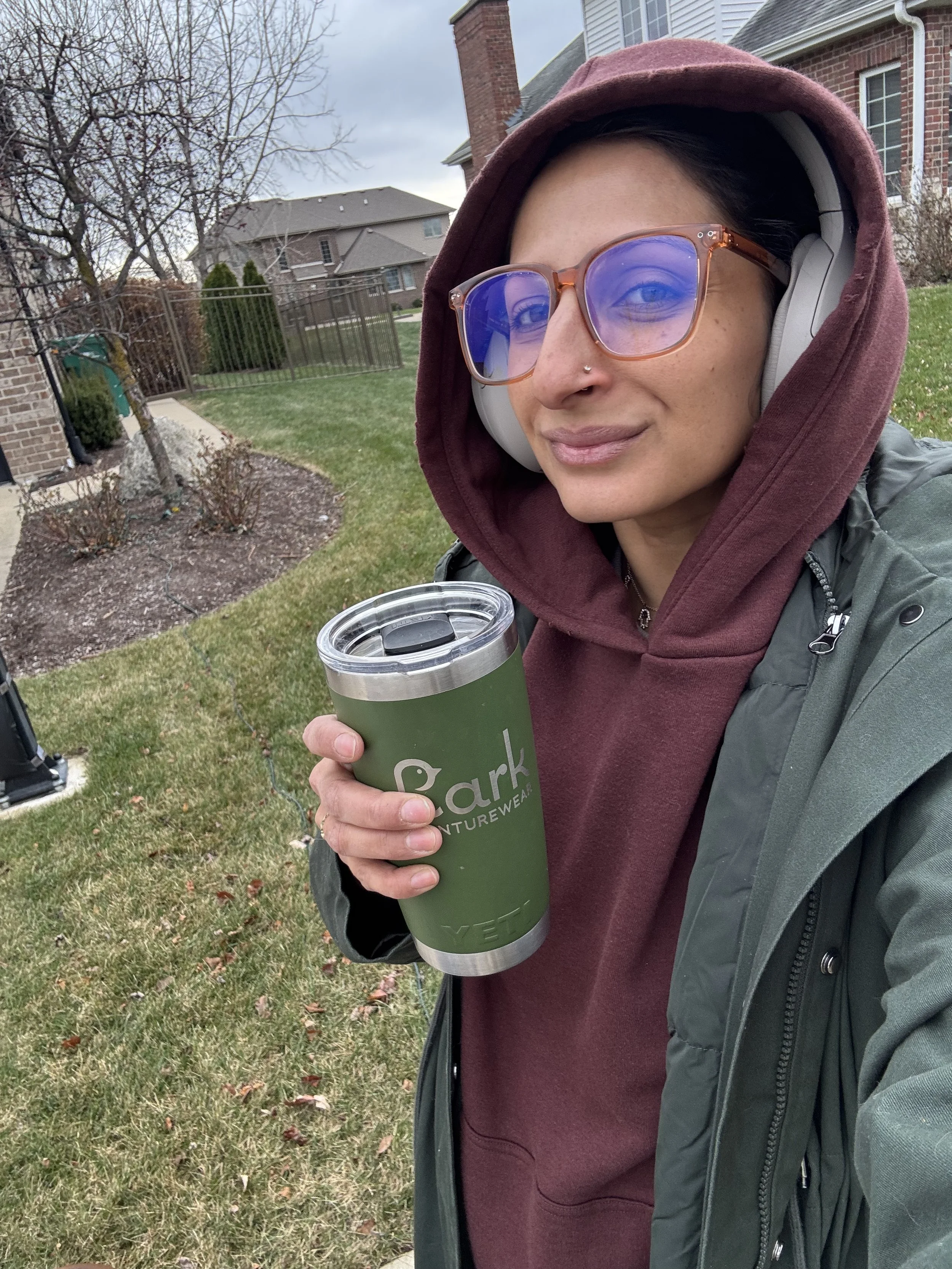Why Walking in the Cold Has Become My Favorite Self-Care Routine
Let me start by saying this: I was born and raised in sunny Los Angeles, where winter meant throwing on a light jacket and calling it a day. For 25 years, I was a warm-weather girl through and through. So, when I moved to a city where the air hurts your face for months at a time, I did everything in my power to avoid going outside. That confinement during my first Long Island winter led to one of the darkest bouts of seasonal depression I’d ever experienced.
I tried the gym, but peeling myself off the hand-me-down futon we’d inherited felt impossible most days. It didn’t help that our living situation was… less than ideal. We lived in an attic apartment with green carpet, yellow walls, and a kitchen the size of my current pantry. It was far from luxurious, but it was all we could afford at the time. Those walls closed in on me, and the thought of enduring months like this every year felt unbearable.
Fast forward 11 years, and while I still struggle with the winter blues, I decided to take a different approach this year: winter walks. I forced myself to bundle up, brave the cold, and step outside. Being in nature has always been my happy place, and I realized that depriving myself of it for months on end only made my depression worse.
I’d recently read about the health benefits of walking in cold weather—boosted mood, better immunity, and increased energy—and figured, why not? It’s free, and the alternative wasn’t working. So, I slipped on my boots, layered on my warmest clothes, put on my headphones, and stepped out into the frost. To my surprise, it’s been a game-changer.
Physical Benefits
Boosts Immunity: Exposure to cooler temperatures can help strengthen your immune system, making your body more resilient to illness.
Burns More Calories: Your body works harder to regulate its temperature in the cold, which can lead to burning more calories.
Improves Cardiovascular Health: Walking in colder weather can enhance circulation and support heart health by gently challenging your cardiovascular system.
Strengthens Bones and Muscles: Regular walking helps maintain bone density and muscle strength, which are especially important during winter when activity levels tend to decrease.
Mental and Emotional Benefits
Boosts Mood: Exposure to natural light, even on cloudy days, can help combat seasonal affective disorder (SAD) and improve overall mood by increasing serotonin levels.
Reduces Stress: The combination of physical activity and time in nature promotes relaxation and reduces stress hormones like cortisol.
Increases Energy Levels: Walking outdoors in fresh, crisp air can help counteract winter sluggishness and increase energy.
Cognitive Benefits
Enhances Focus: Spending time outdoors can improve concentration and mental clarity, which are often affected by winter blues.
Encourages Creativity: Being in a natural environment can stimulate creativity and problem-solving abilities.
Other Benefits
Provides Vitamin D: Even limited exposure to sunlight in winter helps your body synthesize vitamin D, which supports bone health and immune function.
Connects You to Nature: Experiencing the unique beauty of winter landscapes fosters a sense of peace and mindfulness.
Encourages Consistency: Maintaining an active walking routine in winter helps establish habits that you can carry into other seasons.
Now, after embracing winter walks as part of my routine, I can honestly say they’ve transformed my outlook on the colder months. Instead of feeling trapped indoors, I’ve found joy in the crisp air, the crunch of snow underfoot, and the quiet beauty of winter landscapes. The physical benefits—like improved circulation, better immunity, and even a bit of calorie burn—are a bonus, but it’s the mental and emotional relief that truly keeps me going. I’ve discovered that being outside, even in freezing temperatures, reconnects me with nature and boosts my mood in ways that nothing else can during these darker months.
If you’re like I was—dreading the cold and avoiding it at all costs—consider giving winter walks a try. Start small: a walk around the block, a stroll through a nearby park, or even a quick errand on foot. Bundle up, take it slow, and let yourself experience the fresh air and natural light. It may feel uncomfortable at first, but the benefits are undeniable. Winter walks may not solve everything, but they’ve given me a sense of control over the season, a reason to step outside, and a deeper appreciation for winter’s quieter magic. Sometimes, the smallest shifts in routine can have the biggest impact. Who knows? You might just find yourself looking forward to them as much as I do now.





